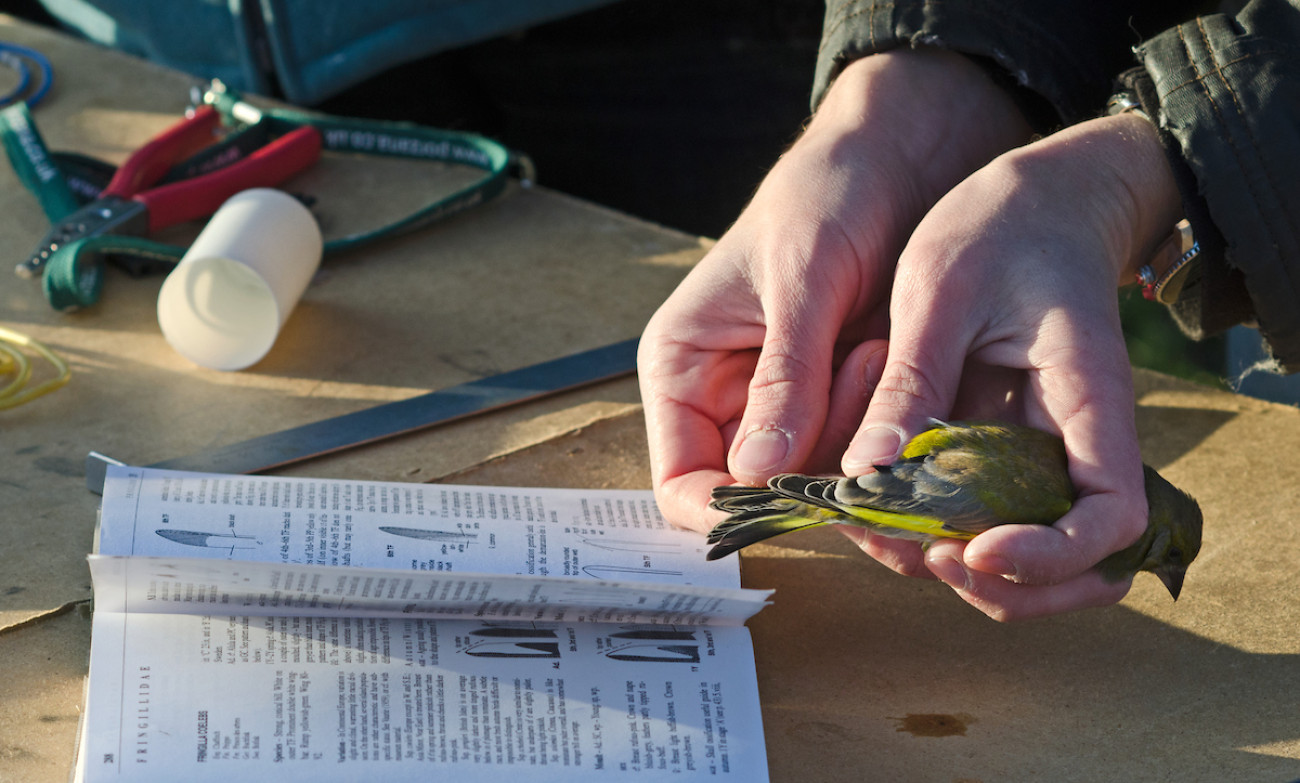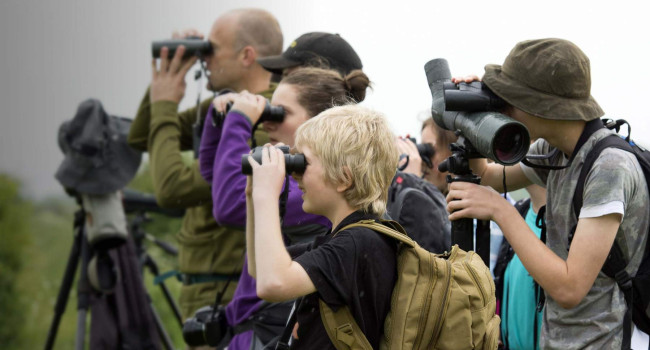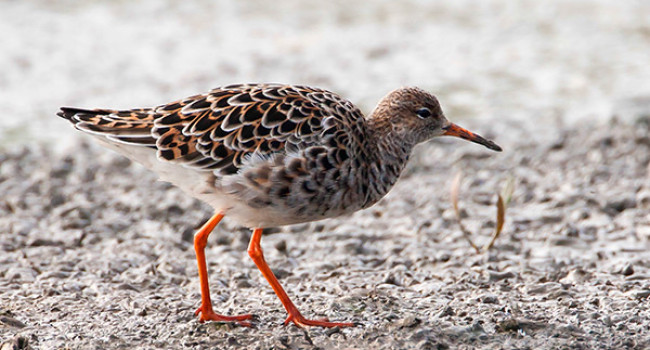Key birding tools
You don’t need anything to enjoy birds – many can be seen or heard with no more than a bit of patience. However, three key items will enhance your experience, aid the identification process and help you to progress: some reasonable-quality optical equipment, a field guide and a way to record your observations.

Optical equipment
It is often easy to see enough features on large, approachable birds to identify them with the naked eye. For many others, though, you’ll need binoculars – or ‘bins’, as many birders call them – to get good enough views. Choosing the right pair can be overwhelming so here are a few tips to help:
Know what the numbers mean
8x32, 10x40 or 12x50? The first number is the magnification, the second the diameter of the objective lens, in millimetres. Whilst it can be tempting to go for the highest magnification possible, anything above 10x is difficult to hold steady. Furthermore, with all else being equal, higher magnification means less light-gathering capability and a narrower field of view.
How will you use them?
Do you tend to birdwatch in woodlands (where the birds you can see will likely be in nearby vegetation) or more open areas (where you can see birds further away)? How long do you normally go out for, and what else do you carry? Do you use binoculars to look at insects? Answering these questions will help you choose the right combination of magnification, field of view, weight and minimum focussing distance…within your budget!
Try before you buy
Even if you ultimately buy online, go to a shop with a good range of optics and try out several pairs in your price range. Ask other birders what they use; they may even let you try theirs. Even if you already have an idea of which binoculars you want, it may be that another brand are more comfortable for your eyes.

Other points on optics
- A wider field of view helps when finding birds in woodland or other habitats where there is a lot of similar-looking background.
- The light-gathering advantages of larger objective lenses are only really evident in low light conditions so if weight is an issue and you usually go birding in good weather, 32mm objective lenses are generally fine.
- It always pays to have your binoculars handy, ideally around your neck. If you are likely to be carrying them for any length of time, you may want to invest in a more comfortable neck strap or even a binocular harness to better distribute the weight.
- If you birdwatch at large wetlands, coastal areas or any other habitats where many of the birds are quite distant, you will probably want to consider buying a telescope and tripod or hide clamp – the same advice applies.

Field guides
The value of owning – and knowing your way around – a good field guide can’t be overstated. Whether you opt for a book or a smartphone app, painted or photographic illustrations, make sure it ticks the following boxes:
- Covers all the species likely to be found wherever you plan to use it – but not too many more, as this can be confusing.
- Up to date identification pointers, illustrations, maps and other information. A grandparent’s well-loved bird book is a wonderful memento but a modern field guide is more practical.
- Small enough to be easy to carry and use in the field.
Take a look at a few guides to decide what's best for you. One bird guide worth considering is The Collins BTO Guide to British Birds - a photographic guide that covers all common bird species in the UK and is written by expert BTO birder Paul Stancliffe.

Recording your observations
Whether it is documenting the rare or unfamiliar, capturing the essence of an interesting observation or keeping a running total of the number of species and individual birds encountered, a note-taking device is a must-have item! The versatility of a notebook and pencil is hard to beat, and developing good note-taking skills is a great way to improve your bird ID and surveying, so never go out without them.
A camera and sound-recording device are extremely useful, too. Most smartphones are equipped with both, so make sure you are familar with them. Try taking photos with your smartphone through your binoculars or telescope – the results can be surprisingly good and may help you clinch the identification of an unfamiliar bird.
- The BirdTrack app is a great way to log your sightings, and your records will contribute to conservation science. As well as birds, you can also record mammals, reptiles, amphibians, butterflies, dragonflies and orchids in BirdTrack.








Share this page